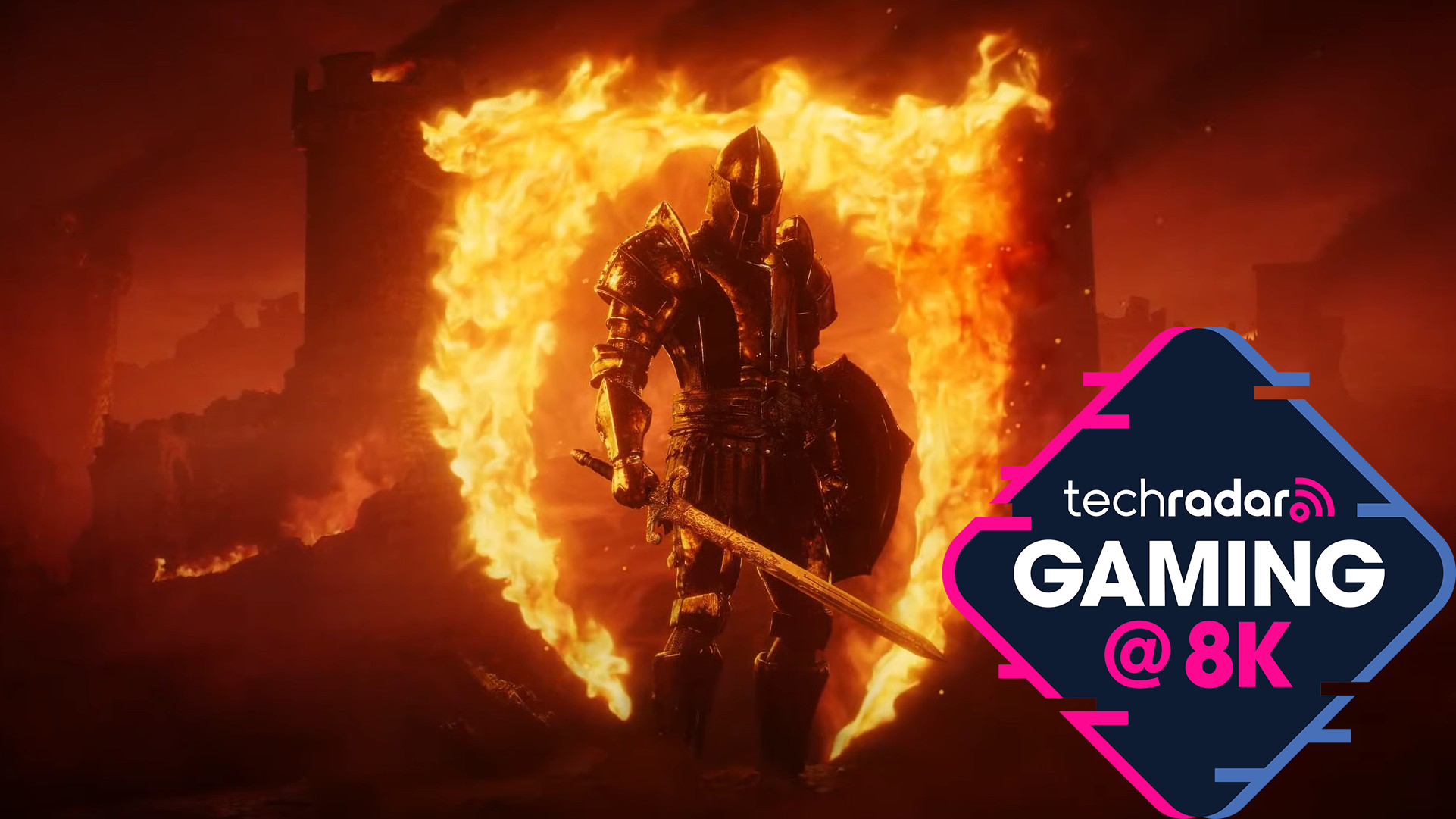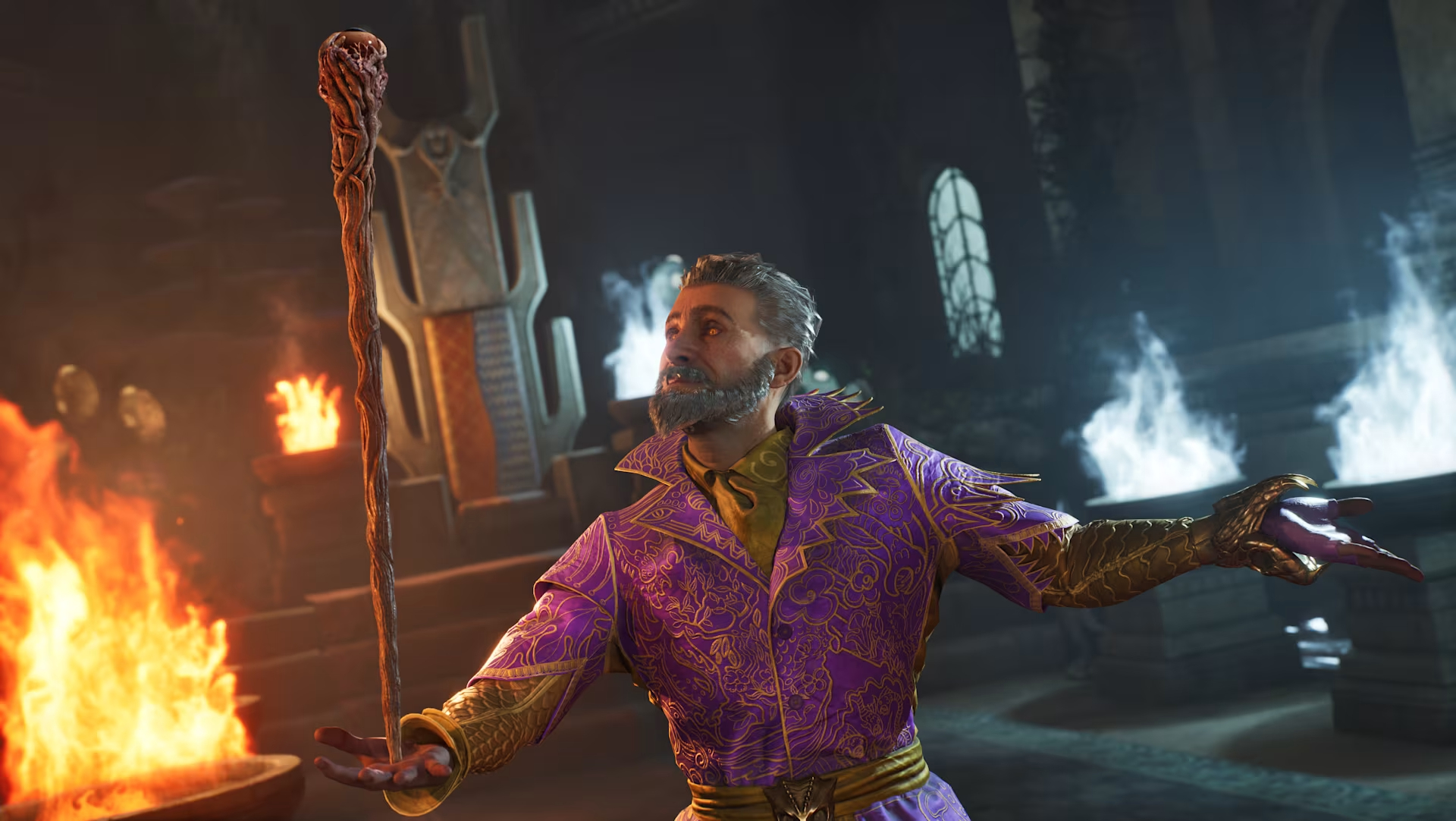Oblivion Remastered in 8K with the Nvidia RTX 5090 looks to the past to show gaming's future – both the good and the bad
Classic game Oblivion has been remastered – how does it play at 8K?

Motherboard: Asus ROG Strix B850-I Gaming Wi-Fi
Processor: AMD Ryzen 7 9800X3D (8-core)
CPU Cooler: Corsair iCUE LINK TITAN 240mm
GPU: Nvidia GeForce RTX 5090 FE
Storage: 1TB WD_Black SN7100, 2TB XPG Gammix S70 Blade
Case: Acer Predator MI900
RAM: G.Skill Trident Z5 Royal Neo 96GB DDR5
PSU: Corsair SF1000
Screen: LG 55NANO966PA
Bethesda's Elder Scrolls IV: Oblivion is an iconic RPG game that I always regretted not playing.
When it first launched in 2006 on PC and Xbox 360, I was fresh out of college, broke and living in a flatshare with just my trusty PS2 for entertainment.
By the time its sequel, Skyrim, came out I had a gaming PC capable of playing modern games and quickly fell in love with the latest installment.
I spent countless hours in Skyrim – yet despite hearing nothing but praise for Oblivion, I never got round to playing it. I was left feeling like I was missing out on an essential bit of gaming lore, especially given the many memes that emerged from the game.
So, when Bethesda surpised us all by announcing – and releasing – Elder Scrolls IV: Oblivion Remastered, with new graphics and quality-of-life improvements, I was excited to finally give it a spin.
With overhauled graphics courtesy of Unreal Engine 5 and advanced ray-tracing lighting, I was also keen to see how well this remake of a nearly 20-year-old game could run on the world's most powerful gaming GPU (and one of the best graphics cards ever), the Nvidia RTX 5090 at 8K.

Can it even run at 8K?
After first loading Elder Scrolls IV: Oblivion Remastered, I headed to the graphical options and was a bit concerned, as it looked like the maximum resolution I could pick was 4K (3840 x 2160), despite the screen I was using having a native resolution of 7680 x 4320.
Get daily insight, inspiration and deals in your inbox
Sign up for breaking news, reviews, opinion, top tech deals, and more.
However, I soon discovered that if I set the game to Borderless mode, the game runs at the resolution you've set in Windows. It's a bit confusing, as the resolution box is grayed out when using Borderless mode, yet says 3840 x 2160; this initially led me to believe the resolution was locked at 4K, but I confirmed it was indeed running at 8K.
With all the graphical settings set to 'Ultra', but with upscaling tech such as DLSS turned off, I ran about the open world fields, getting into a few fights with flying monsters.
Or at least, I tried to, as running Elder Scrolls IV: Oblivion Remastered at native 8K with no upscaling help made even the mighty RTX 5090 struggle, with an average frame rate of 21fps (frames per second).
This led to the game feeling sluggish and jittery – and it was particularly painful trying to attack Imps, which hover above ground and throw spells at you.
However, I do have to give the RTX 5090 credit for even managing 21fps. While the Elder Scrolls IV: Oblivion Remastered is based on an almost 20-year-old game, visually it looks very good, so even getting a remotely playable experience at full 7680 x 4320 resolution shows the kind of raw performance the RTX 5090 is capable of.
That said, it's becoming increasingly obvious that PC gamers are using upscaling tools like DLSS (Deep Learning Super Sampling) to improve performance, even with flagship GPUs like the RTX 5090.
In previous articles I've found that these tools can make a huge impact to making games playable at 8K without having to sacrifice too much image quality, and that was again the case here.
Keeping the graphics setting at Ultra, I turned on DLSS and set it to 'Balanced', which (as the name suggests) strikes a balance between increasing performance and maintaining graphical fidelity.
The way these upscaling tools work is by rendering the game at a lower resolution and then using artificial intelligence to add pixels to increase the resolution. The lower the starting resolution, the better the performance will be, but because the AI will need to generate more pixels to upscale the game to the required resolution, more errors and artefacts can be introduced, impacting graphics quality.
The impact to performance was immediate, with the RTX 5090 now running Elder Scrolls IV: Oblivion Remastered at 47fps. Instantly, the game felt much smoother and more fun to play.
I did notice a few small visual artefacts – however, the most noticeable was a giant reflection of my weapon when looking at water. This is a result of screen space reflections and is a pretty common complaint with Oblivion – and thankfully, it's easy to 'fix' by turning off screen space reflections in the graphics settings of the game.

Making sacrifices
While 47fps at 8K is a lot better than the 21fps I was getting playing natively, it's still far from the 60fps I consider the minimum for having an enjoyable gaming experience in 2025.
So, I changed DLSS to 'Performance' mode, which emphasizes performance increases over visual quality. I was then able to play Oblivion at 59fps on average, and again the game felt a lot smoother and more responsive. On the flip side, visual glitches, such as slight ghosting around moving plants, were more noticeable.
While certainly not game-breaking, it was enough to make me actually prefer to play with DLSS set to 'balanced', even with the drop in frame rate.
Thankfully, there were still a few tricks I could perform to try to get both good graphics and good frame rates at 8K without having to sacrifice too much.
Frame gen – why the hate?
By using an Nvidia-capable GPU with DLSS, I could also enable the Frame Generation feature in Oblivion's settings.
This feature again uses AI – this time to generate an image and insert it between two frames rendered by the GPU. If implemented well, this can give a boost to the framerate, as more frames are being shown per second, without any noticeable drops in quality.
I say 'if implemented well', because when the feature first started appearing in games a few years ago, the generated frames were sometimes all-too obvious, leading to a blurring effect that put me off from using the tool for a few years.
Since then, Nvidia has worked with game developers to improve Frame Generation, and I've found recent implementations to work a lot better. It's still a controversial feature among some PC gamers, however, who argue that these are not 'real' frames, and by relying on Frame Generation game developers are not bothering to optimize their games for PC.
I'm more of the opinion that if a feature works well, makes playing games more enjoyable and there's no noticeable downside, then I don't care that much if a frame is real or not.
Having said that, when the results are disappointing, I'm not going to be a fan – and I do share concerns that a reliance on tech such as DLSS and Frame Generation to smooth over poor performance and optimization would be a worrying trend.
With Frame Generation on, DLSS on Balanced and graphics preset to Ultra, I was able to get Oblivion running at 82fps at 8K. This big leap again improved the overall feel of the game, and running through fields and fighting Imps was a joy.
Those small graphical imperfections kept on nagging at me, however. When a game is blown up to 8K on a large (for a monitor) 55-inch screen, any imperfection also gets magnified.
So, with the fps overhead that Frame Generation gave me, I set DLSS to Quality, minimising the amount of upscaling needed to reach 8K and hopefully removing those graphical issues.
The result was indeed a cleaner picture, but with a drop in frame rate to 70fps. Still impressive and well above the 60fps I aim for (and with almost all 8K TVs maxing out at 8K at 60Hz, any benefit of going over 60fps is limited).
Finally, I decided to try out Oblivion with Nvidia's latest feature, which is exclusive to RTX 5000 series GPUs such as the RTX 5090: Multi Frame Generation (MFG).
This is the next evolution of Frame Generation, with the GPU using AI to generate up to three extra frames for every 'real' rendered frame. I've been very impressed with this feature in previous tests, and wanted to see how well it worked with Oblivion.
There's no built-in support for MFG in Elder Scrolls IV: Oblivion Remastered at the moment, but you can enable it via the Nvidia app for Windows 11.
With MFG enabled, I loaded Elder Scrolls IV: Oblivion Remastered and was treated to frame rates of 117fps on average. Seriously impressive stuff, especially as although the RTX 5090 was now generating three times as many frames, there was no noticeable impact to graphic fidelity compared to when I was playing with standard Frame Generation enabled.

Conclusion: Impressive, but back to 4K I go
Once again, I found that Elder Scrolls IV: Oblivion Remastered is another game that the Nvidia RTX 5090 can play at 8K – but with a lot of help from DLSS and Multi Frame Generation.
However, maybe because of underlying technology or the fact that the game hasn't been out (in remastered form) long enough for major patches or drivers, the visual artefacts that are introduced using these features were particularly obvious – and distracting.
Going back to 4K, and not having to be so reliant on those features, due to the RTX 5090 doing a very good job of running the game at native 4K, eliminated those artefacts.
So, this is further proof that 4K remains the best way to play, and that despite people's concerns, DLSS, MFG and similar technologies from AMD and Intel aren't sticking plaster fixes to improve performance without too much cost to visual quality... yet.
You might also like

Matt is TechRadar's Managing Editor for Core Tech, looking after computing and mobile technology. Having written for a number of publications such as PC Plus, PC Format, T3 and Linux Format, there's no aspect of technology that Matt isn't passionate about, especially computing and PC gaming. He’s personally reviewed and used most of the laptops in our best laptops guide - and since joining TechRadar in 2014, he's reviewed over 250 laptops and computing accessories personally.
You must confirm your public display name before commenting
Please logout and then login again, you will then be prompted to enter your display name.